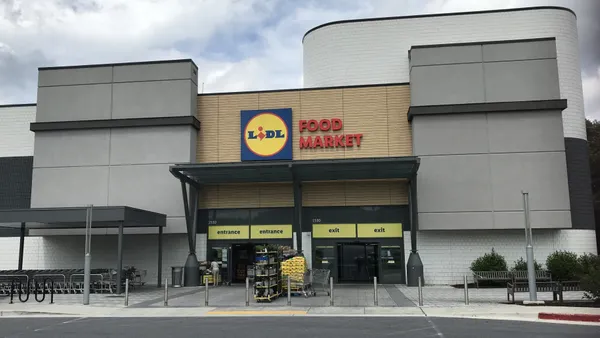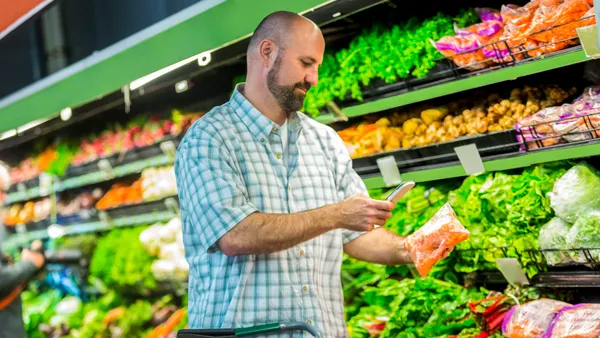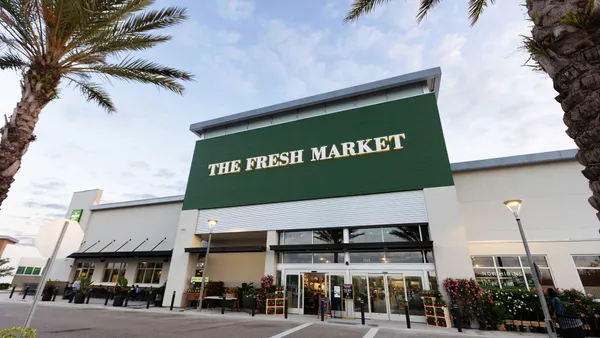UPDATE: June 28, 2019: This story has been updated with comment from Walmart.
Dive Brief:
- Walmart captures 50% or more of grocery sales in 43 metropolitan areas and 160 smaller markets across the U.S., according to a new analysis from the Institute for Local Self-Reliance (ILSR) that examined spending data from 2018.
- In 38 of the regions studied, Walmart has a share of 70% or more of the grocery market in places such as Joplin, Missouri (71%) and Bismarck, North Dakota (83%).
- The report found that nationally, one out of every four U.S. grocery dollars go to Walmart — more than the market share of the next five largest supermarket chains combined.
Dive Insight:
Walmart has long had a major presence in locales across the U.S., from small towns in rural America to suburbs located near major cities. In some places, the retail giant is one of the only sources for fresh groceries. Regardless of the city's size, Walmart is a go-to source for many consumers for its wide range of affordable products, including grocery items.
After growing its store count at breakneck speed in the '90s and early 2000s, Walmart has slowed down and is focusing on investments to its existing store base. This includes e-commerce capabilities. Grocery delivery from Walmart is available to more than 50% of U.S. households, and grocery pickup will be available at 3,100 stores by the end of this year, reaching about 80% of U.S. households.
From ILSR’s perspective Walmart’s quest for grocery dominance has gone too far. With its low prices and large corporate presence, Walmart has created a grocery monopoly that makes it difficult for small businesses and independent grocers to compete, the organization argues. According to its report, the company’s national command of the grocery market allows it to manipulate food producers and to keep more profit for itself.
On the other hand, Walmart offers a large assortment of groceries at low prices, and may be the only major grocery source in town because traditional grocers don’t want to go into low-income rural areas. This has led to a reliance on the retailer in some places, which becomes problematic and leaves people without food, pharmacies and necessities when a Walmart store has to shut down or leave town.
There is a three-part fix to the Walmart monopoly, according to ILSR. First, the group calls on the government to enforce antitrust laws and promote competition. The report also suggests the Federal Trade Commission review Walmart’s market share and require the retailer to sell stores. Finally, ILSR writes that policymakers should make it easier for local entrepreneurs to access loans and funding.
Responding to the report, Walmart spokesman Randy Hargrove wrote in an email to Grocery Dive: “This flawed report ignores the fact that millions of Americans are able to enjoy access to quality fresh food at affordable prices because of Walmart.”
While Walmart may be a dominant player, it is not the only one in the game. Amazon’s share of the grocery market has continued to climb and its ambitions in grocery have grown. Traditional grocers like Kroger and Albertsons also have a large market share — though not nearly as large as Walmart’s.
Independent grocers, meanwhile, are struggling mightily in today's competitive, increasingly digital food retail industry. But there are some that are thriving. Last month, Barons Market opened its eighth location in Southern California and has another opening planned this year, according to a press release sent to Grocery Dive. Portland’s Basics Market is another small grocer that continues to see demand for growth, having opened three locations since it launched in September.














